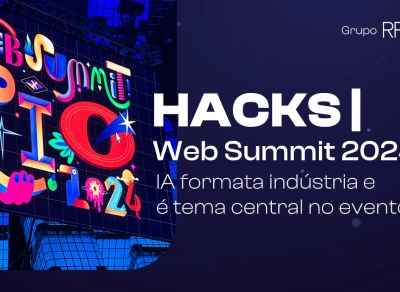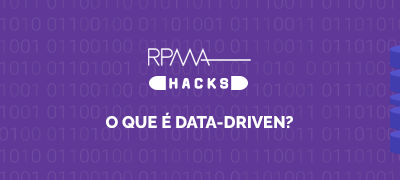SXSW isn’t exactly new. It started in 1987, before the internet. At the time, Roland Swenson, an employee of The Austin Chronicle, received an invitation from the organizers of the New Music Seminar in New York to bring an extension of the music festival to Austin, Texas. In its first edition, the organizers expected to receive about 150 participants. Over 700 people from all over the United States showed up to watch 77 musical acts and attend 15 lectures, which were held in bars, restaurants, empty stores, and parking lots.
Since then, the event has grown in popularity and become a global success, attracting names like Barack Obama, Elon Musk, Mark Zuckerberg, and Oprah Winfrey.
SXSW welcomed around 300,000 visitors this year and generated revenue exceeding $500 million. The diversity is striking: there are 13 categories focusing on music, art, film, design, media, and technology. Over ten days, more than 4,000 events, including performances, interviews, and panels, were held at the festival.
This gigantism has made it challenging to maintain a central theme or provide directions for the audience. In an article for M&M, Pyr Marcondes gets to the heart of the matter: “The event has fallen into the trap of its thematic exponentiality and doesn’t know how to get out of it.” When you talk about everything and give voice to many trends, it’s impossible to point in one direction. Long live the democracy of SXSW!
So, it is impossible to summarize the coolest things that happened at SXSW 2023, its main trends, and attractions. Everyone creates their menu, probably different for each of the 300,000 visitors. We, from RPMA, divided ourselves to attend as much content as possible. Even so, when we gathered to discuss what each of us found most interesting, the result was a genuine Tower of Babel!
However, we found a common thread: today, the world has some contexts involving over 8 billion inhabitants, and most serve as a backdrop for SXSW events. Among the many global contexts, we decided to focus on three that seemed most significant to most of us and those that affect us the most:
- The challenge of diversity and minority rights.
- The self-destructive model of the current world.
- The universal influence that AI will have on our lives going forward.
At the risk of committing a great injustice, we chose the event that best represented each category.
In the context of diversity, we loved the conversation between Chelsea Manning and Harry Halpin, both cybersecurity experts, discussing the future of internet privacy. But what’s even cooler is Chelsea’s story, which overshadows the content. Chelsea is transgender, 35 years old, and spent seven years in prison for leaking confidential information to WikiLeaks in what was the largest data leak scandal in US history. The former soldier, who was sentenced to 35 years in prison, was released in 2017.
In 2010, while serving as a military intelligence analyst, Chelsea transmitted over 700,000 confidential documents about the wars in Iraq and Afghanistan and State Department communications to the WikiLeaks portal, led by Australian Julian Assange. After her conviction, her sentence was commuted by Barack Obama, and now she works for the US Army (for which she served in Iraq), helping to detect, prevent, and remedy problems caused by hackers. The cool thing about all this is realizing that the audience watched the conversation with great interest in digital security issues, without any prejudice against Chelsea’s life story or the fact that she developed much of her knowledge while in prison.
Still, on this topic, it’s worth noting the moment we considered the most fun and motivating of the event: Priyanka Chopra Jonas is a successful Indian actress and producer from Bollywood who has transitioned to Hollywood over the past decade to produce films with global reach. Interviewed by Jennifer Salke, head of Amazon Studios, they discuss women’s difficulties and challenges in the entertainment industry.
To understand a bit of the self-destructive insanity of the current world, we chose, as a backdrop, the conversation between the co-authors of the book The Future Normal, Rohit Bhargava and Henry Coutinho-Mason. The book was launched at SXSW when the two authors met. Yes, they wrote a book together, maintaining a relationship and coworking from a distance, residing in distant countries with different cultures! This shows the crazy world we live in. The duo does not deny the insanity of the current world, with minority struggles for a voice, suicidal destruction of the environment, wars that destroy the global supply chain, loss of privacy, fake news, economic crises worldwide, inflation, and so on.
They both present themselves as near futurists: they seek to look around and identify new possibilities based on technology and available circumstances, aiming to ensure our survival in the near future.
Thus, they address topics such as the synthetic production of animal protein through genetic engineering. The subject was also discussed in another SXSW lecture, focusing on a factory in Singapore where production is based on genetically reproduced animal samples. The duo also talks about synthetic and biodegradable materials for clothing and what we can do to preserve what is left of the environment. In other words, the future norm is to worry every day about the consequences of our actions today on our children’s lives tomorrow.
Still, on this topic, we highlight the festival’s opening keynote by Simran Jeet Singh, executive director of the Religion and Society program at the Aspen Institute, who recently released the book The Light We Give: How Sikh Wisdom Can Transform Your Life, addressing the challenges of growing up in Texas as a Sikh and having to deal with constant episodes of intolerance and racism.
“How do we find light when everything seems lost? How do we love people who don’t love us? How do we find the humanity of people who don’t care? These are tough questions, and it’s not something our society is doing a good job of figuring out,” Singh questions in his encouraging and emotional speech.
The choices became very difficult when we started delving into the vast block of AI-related events. The theme permeates most discussions, with dozens of contents on the subject. We opted for the obvious: listening to Greg Brockman, CEO of ChatGPT, who has popularized the AI theme overwhelmingly since November 2022. In his interview, he prepared us for new surprises and reminded us that the changes will be felt in all aspects of our daily lives.
Laurie Segall, from Dot Dot Dot Media, was a standout interviewer, as were many other moderators and interviewers who demonstrated excellent preparation throughout the event.
Brockman focused mainly on the non-technical aspects of AI that directly impact us, such as ethical issues associated with the technology. How can professionals develop their judgment capability? How can content producers transition to content managers and modelers? How can we deal with deep fakes?
In his view, soft skills are now even more essential for job preservation. It’s an upgrade from current skills to AI-powered skills. One point of his interview is striking: Brockman reveals that one of OpenAI’s top priorities is to hire philosophers to improve the judgment capability of prompt engineers, a new profession for experts in AI platforms since most of them allow communication in natural language.
The OpenAI two-tier model is also highly innovative. In tier 1, the company aims to be open source, offering its technology to the world to improve human comfort. However, in tier 2, through technological partnerships, such as with Microsoft, the company aims for profits and obtains capital to subsidize tier 1. Microsoft alone has invested nearly $40 billion in OpenAI!
To conclude, we couldn’t fail to suggest the interview with Amy Webb, CEO of the Future Today Institute (FTI). FTI annually produces its eagerly awaited edition of the Tech Trends Report (now in its 16th edition), which is traditionally presented to the public at SXSW. This year’s edition is a hefty 820 pages, covering 666 trends. Fortunately, there is an executive summary version available. It’s definitely worth downloading this free report, which is accessible on the FTI website.
But if you’ve made it this far in this lengthy summary of SXSW 2023, I suggest you don’t stop yet. Create your own SXSW on the event’s YouTube profile. You’ll learn and have a lot of fun!





 How can we help?
How can we help?